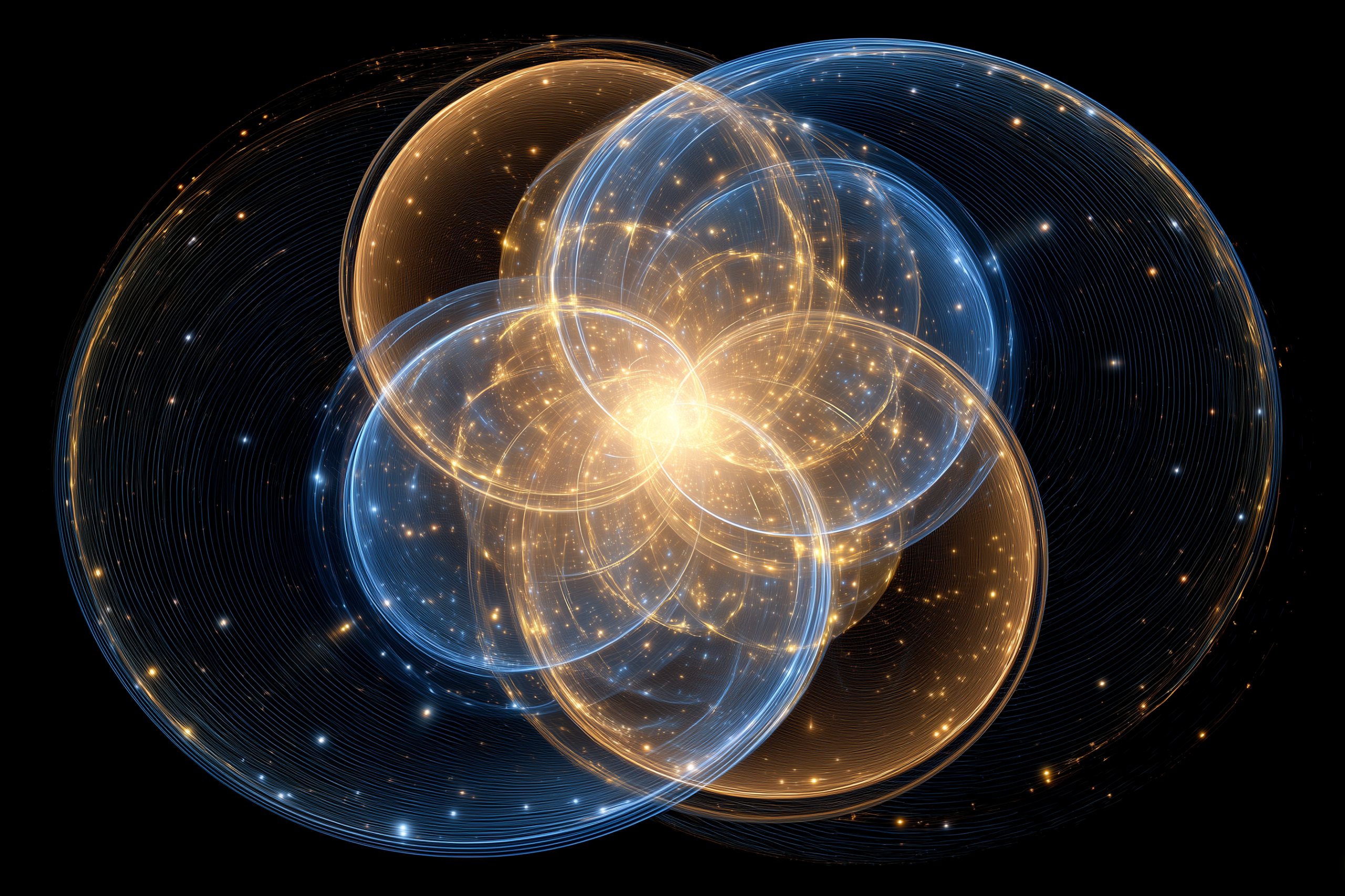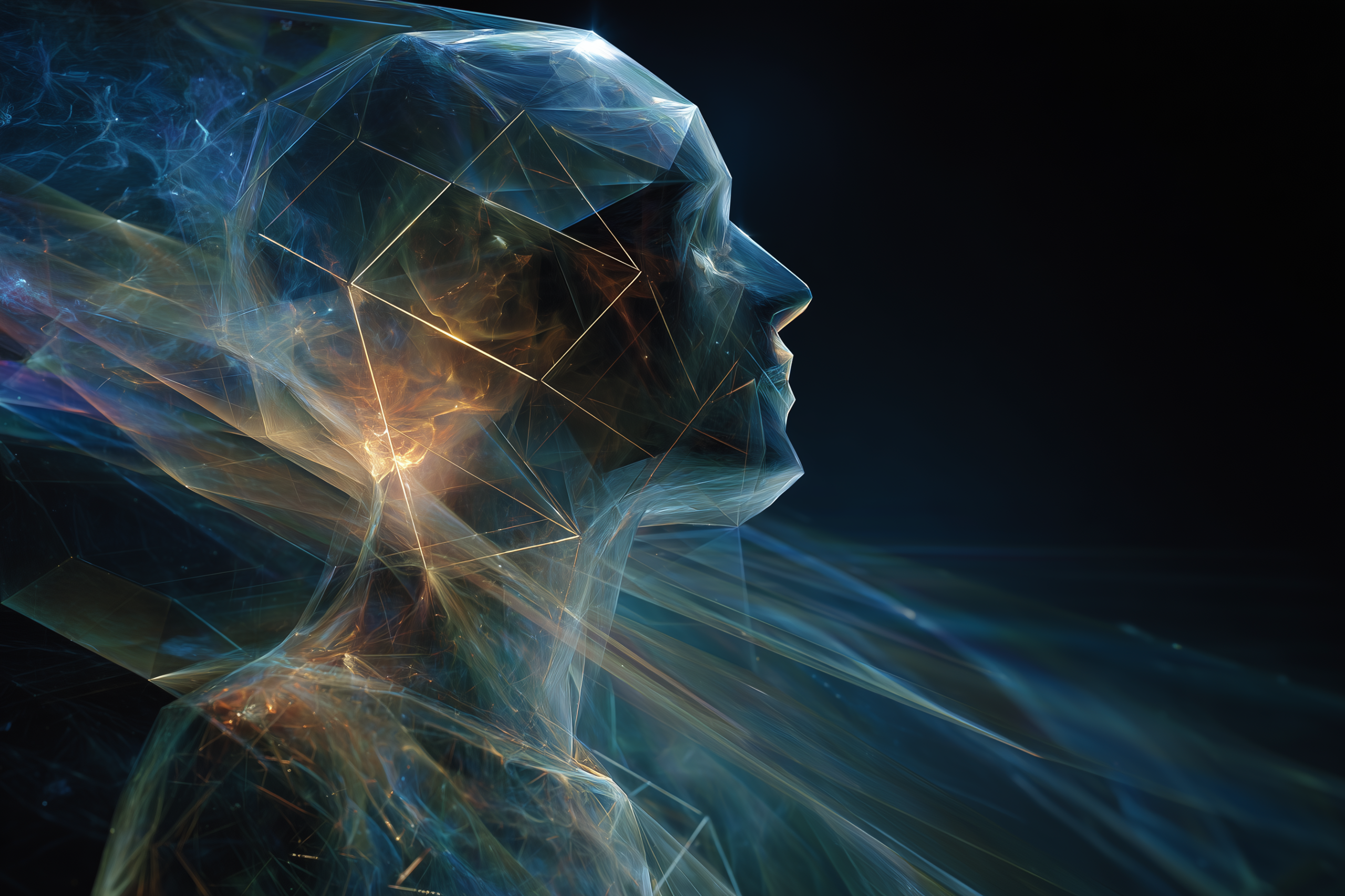Flow isn’t a lightning strike. It’s a current you can learn to ride.
Most people think flow states are accidents—magical moments when everything clicks, time disappears, and performance reaches impossible heights. They wait for flow to happen to them, like lightning striking.
But flow isn’t magic. It’s systematic. And once you understand the algorithm—the step-by-step process that creates optimal conditions—you can cultivate flow states as deliberately as you cultivate any other skill.
I learned this first in sports, where flow felt like the world moving in slow motion while my senses heightened to impossible clarity. Every play unfolded before it happened. Nothing existed except the next move. Time dissolved. What took years to understand was that this wasn’t a gift reserved for elite athletes—it was a learnable process that could be applied to any focused activity.
Now, after decades of practice, I can choose when to flip that switch. Whether I’m writing, in conversation, or solving complex problems, I have environmental cues, breathing patterns, and movement sequences that reliably open the door to flow. The same systematic approach that creates peak performance in sports works for peak consciousness in life.
After exploring how consciousness emerges in both biological and artificial systems, we turn to the most powerful interface for directing consciousness: your own embodied experience.
The Flow Paradox
Here’s what makes flow so elusive: the harder you try to force it, the more it slips away.
Flow emerges from a precise balance between challenge and capability, between effort and ease, between focused attention and relaxed awareness. Push too hard, and tension blocks the state. Try too little, and boredom prevents emergence.
Most people approach flow like they’re trying to grab water—their very attempt destroys what they’re reaching for.
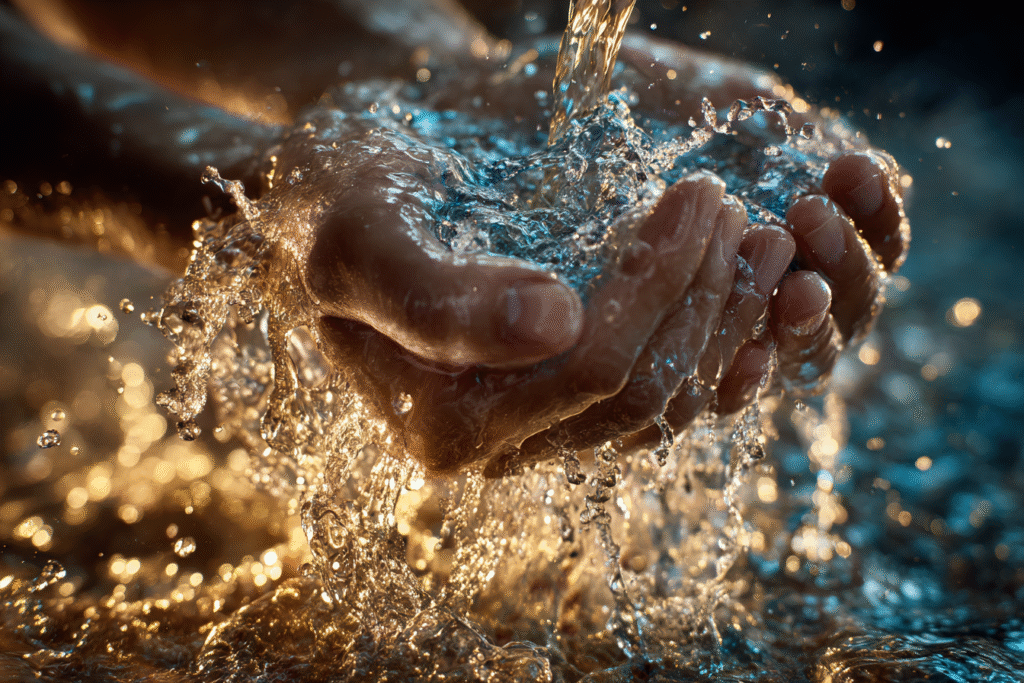
Recent neuroscience research reveals why this happens. During flow states, the brain’s default mode network—responsible for self-consciousness and internal chatter—downregulates dramatically (Yaden et al., 2017)[1]. Simultaneously, the prefrontal cortex releases its typical control functions in a process researchers call “transient hypofrontality” (Dietrich, 2004)[2]. This creates the experience of effortless action and dissolved self-awareness that characterizes flow.
The paradox resolves when you understand that:
Flow isn’t something you do—it’s something you allow by creating optimal conditions.
Like a river that flows naturally when obstructions are removed, consciousness flows naturally when the right conditions align.
This is where our previous work becomes crucial. You can’t force flow, but you can systematically create the conditions where flow naturally emerges.
The Flow State Algorithm
Based on extensive research and practical application, flow states emerge through a predictable sequence. Understanding this algorithm transforms flow from mysterious accident to reproducible skill.
Step 1: Coherence Foundation (Quantum Presence + Conscious Breathing)
Flow requires a coherent baseline—a state where your nervous system, breathing, and attention align. Without this foundation, even perfect environmental conditions won’t trigger flow.
Research from the HeartMath Institute demonstrates that heart rate variability coherence—achieved through conscious breathing patterns—directly influences cognitive function and emotional stability (McCraty & Shaffer, 2015)[3]. This coherent physiological state creates the neurological foundation necessary for flow emergence.
Begin with the coherence breath pattern we explored in “Life in Every Breath“: 4-count inhale, 2-count hold, 6-count exhale. Three conscious cycles usually establish the baseline coherence necessary for flow cultivation.
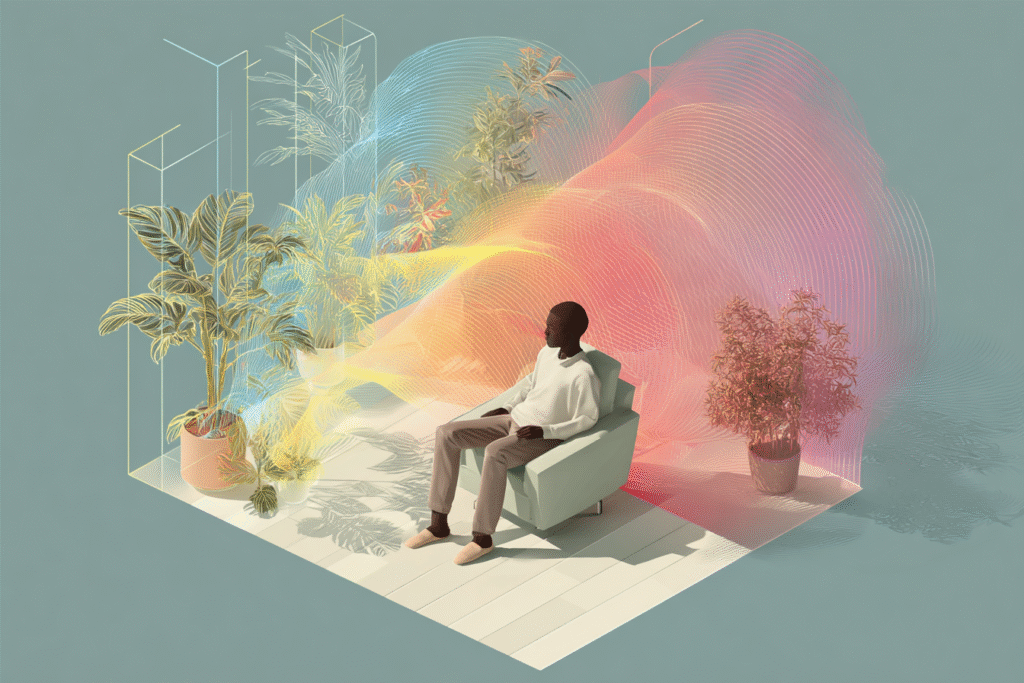
Step 2: Environmental Signal Detection
Flow states are highly sensitive to environmental conditions. Factors like lighting, sound, spatial arrangement, and even electromagnetic fields influence flow probability. This is where our signal detection work becomes essential.
Environmental psychology research shows that specific environmental configurations reliably enhance focus and reduce cognitive load (Mehta et al., 2012)[4]. Optimal lighting (natural or 2700K-3000K), minimal visual clutter, and controlled sound environments create measurable improvements in sustained attention—a prerequisite for flow.
Use the environmental scanning practice from “The Signals You’ve Learned to Dismiss“: pause before beginning any focused activity and sense the space. Does it feel energizing or draining? Supportive or distracting? Trust these signals and adjust accordingly. Sometimes moving three feet or changing your angle to a window makes the difference between struggle and flow.
Step 3: Movement Gateway Activation
This is where Day 40’s movement awareness becomes crucial. Specific movement patterns reliably trigger the neurophysiological transition into flow states.
Research from Stanford University reveals that even simple walking increases creative output by 60% and enhances divergent thinking—both associated with flow states (Oppezzo & Schwartz, 2014)[5]. More sophisticated movement practices create even stronger effects.
The movement gateway works through cross-lateral activation—movements that engage both sides of the body simultaneously. This activates both brain hemispheres and strengthens the corpus callosum, creating the integrated neural state that supports flow (Hannaford, 2018)[6].
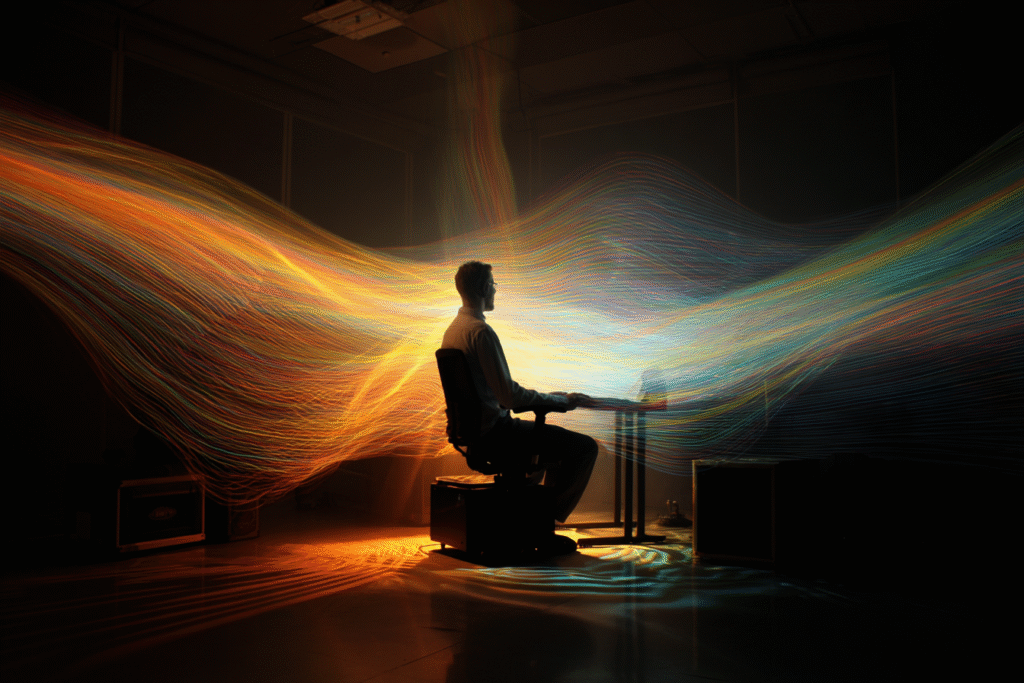
Step 4: Challenge-Skill Calibration
Flow researcher Mihaly Csikszentmihalyi‘s foundational work identified the critical importance of challenge-skill balance. Too easy becomes boring; too difficult creates anxiety. Flow emerges in the narrow channel where challenge slightly exceeds current skill level (Csikszentmihalyi, 1990)[7].
This calibration requires the felt-sense intelligence we developed in “Translating Quantum Wisdom.” Your body knows when challenge level is optimal—there’s a quality of energized focus that emerges when the difficulty is precisely calibrated.
Learn to recognize this feeling and adjust task complexity accordingly.
For example, if you’re writing and find yourself either bored or overwhelmed, adjust immediately: increase complexity by tackling a more challenging section, or reduce it by focusing on editing rather than creation.
A programmer might shift from debugging complex algorithms to organizing code structure. The key is real-time calibration based on your energetic response rather than predetermined difficulty levels.
Step 5: Attention Architecture
Flow requires what researchers call “clear proximal goals”—immediate, specific objectives that fully occupy attention (Jackson & Csikszentmihalyi, 1999)[8]. Vague intentions scatter focus; overly complex goals create overwhelm.
The optimal attention architecture involves three elements:
- Primary focus: One specific, immediate objective
- Peripheral awareness: Soft attention to relevant environmental signals
- Feedback sensitivity: Real-time adjustment based on performance indicators
This creates what neuroscientist Arne Dietrich calls “implicit processing”—action guided by non-conscious competence rather than explicit monitoring (Dietrich, 2004)[9].
Environmental Architecture for Flow
Creating flow-supportive environments is both art and science. Elite performers across disciplines develop specific environmental configurations that reliably trigger flow states.
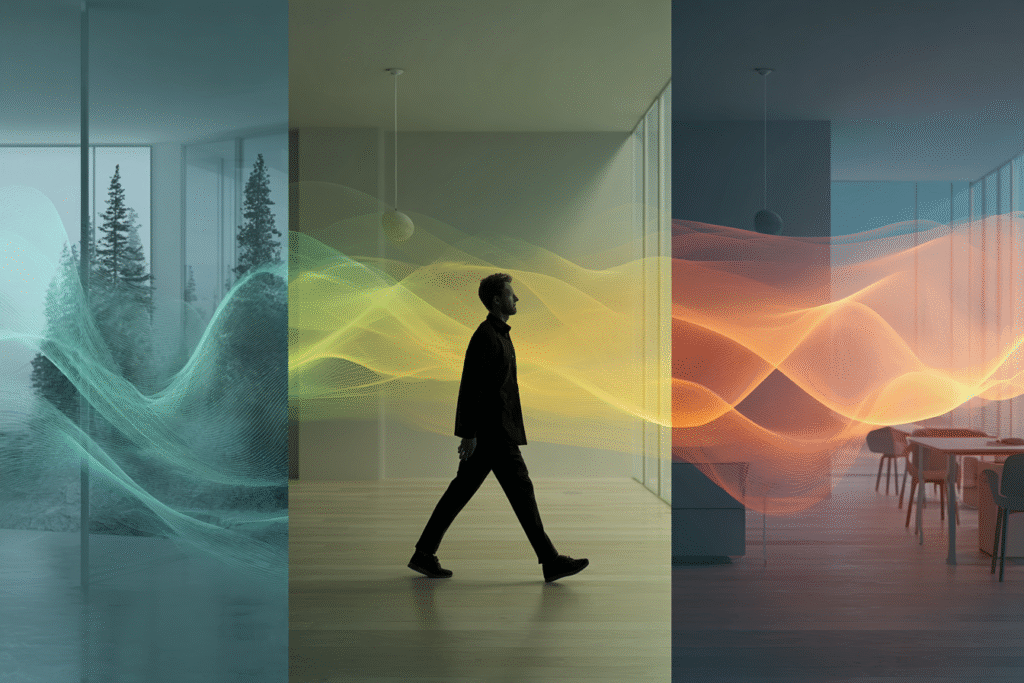
Physical Environment Design
Research from the University of British Columbia demonstrates that ceiling height influences cognitive style—higher ceilings promote abstract thinking and creativity, while lower ceilings enhance detail-focused work (Meyers-Levy & Zhu, 2007)[10]. Design your space accordingly.
Key environmental factors:
- Lighting: Natural light when possible, warm artificial light (2700K-3000K) otherwise
- Sound: Either complete silence or consistent background (brown noise, instrumental music at 50-60 decibels)
- Visual field: Minimal clutter in direct sight lines, inspiring elements in peripheral vision
- Temperature: Slightly cool (68-72°F) for mental tasks, slightly warm (72-76°F) for creative work
- Air quality: Well-ventilated spaces with plants when possible
Ritual and Routine Integration
Flow states respond powerfully to consistent pre-flow routines. Athletes call these “performance rituals”—specific sequences that reliably trigger optimal states.
Your flow ritual might include:
- Specific music or sound environment
- Particular clothing or objects
- Movement or stretching sequence
- Breathing or meditation practice
- Environmental preparation (lighting, organization, etc.)
The key is consistency. Neural pathways strengthen through repetition, making flow states more accessible when environmental and behavioral cues remain constant.
The Practice: Developing Flow as a Skill
Flow cultivation follows the same learning curve as any complex skill. Initial attempts feel effortful and inconsistent. With practice, entry becomes more reliable. Eventually, flow becomes accessible on demand.
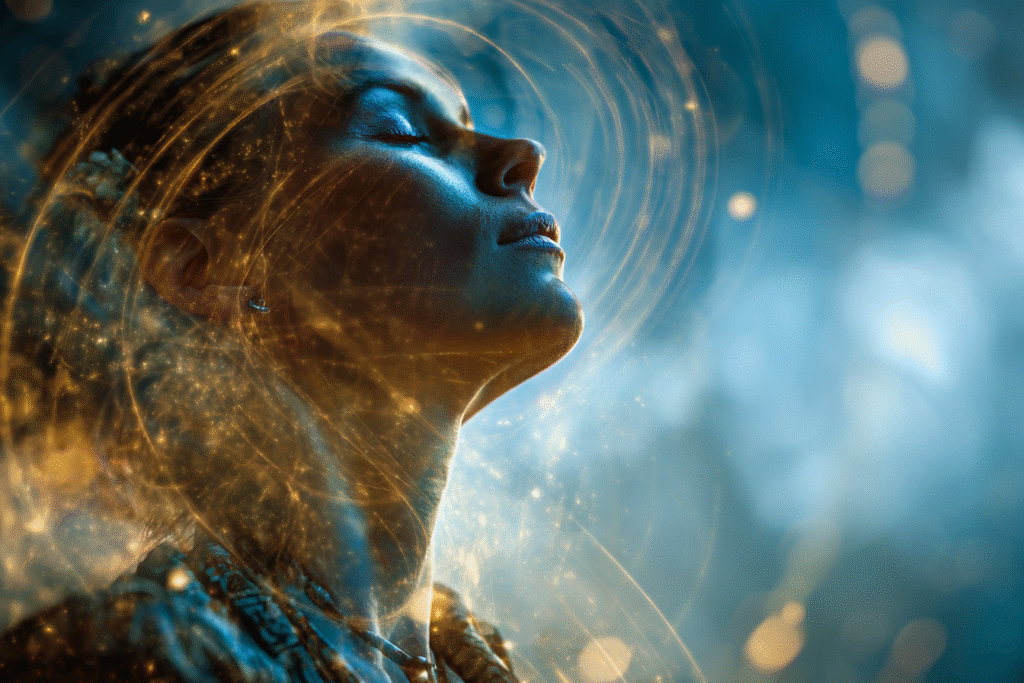
Week 1-2: Foundation Building
Focus on coherence establishment and environmental sensitivity. Practice the 4-count breathing pattern until it becomes automatic. Develop familiarity with how different environments affect your attention and energy.
Begin with activities where you already experience flow occasionally—this could be cooking, writing, playing music, or any focused task you enjoy. The goal is recognizing what flow feels like in your system.
Week 3-4: Pattern Recognition
Start tracking flow experiences. What conditions were present? What was your energy level? What thoughts or concerns were you carrying? What environmental factors seemed supportive?
Begin experimenting with simple environmental modifications. Notice how changing lighting, music, or physical position affects your ability to sustain focus.
Week 5-8: Systematic Application
Develop your personal flow algorithm—the specific sequence of environmental, physiological, and attentional conditions that most reliably create flow for you.
This is highly individual. Some people need complete silence; others require background sound. Some flow better in the morning; others late at night. Some need physical movement first; others prefer stillness. Trust your observations over general principles.
Week 9-12: Advanced Integration
Begin applying flow cultivation to more challenging situations: difficult conversations, complex problem-solving, creative projects, physical activities.
The goal shifts from entering flow to maintaining flow despite changing conditions. This requires real-time adjustment using the signal detection and translation skills we’ve developed.
Advanced Applications: Beyond Performance
Once flow becomes accessible, you can apply it strategically across life domains.

Flow in Conversation
Deep listening creates a form of interpersonal flow. When you’re fully present to another person—breathing coherently, sensing their energy signals, responding from authentic presence rather than prepared scripts—conversations can enter flow states where insights emerge naturally for both people.
This requires releasing the need to control outcomes and trusting the intelligence of the moment. The same attention architecture that creates flow in individual activities applies to relational flow.
Flow in Problem-Solving
Complex challenges often resolve through flow-state insights rather than logical analysis. When you’ve gathered relevant information but haven’t forced a solution, flow states allow unconscious processing to present breakthrough perspectives.
The key is learning when to step back from analytical effort and create space for emergent solutions. This timing sensitivity develops through practice with signal detection and translation.
Flow in Daily Activities
Perhaps most valuably, flow principles transform routine activities into opportunities for peak consciousness. Washing dishes, walking, even administrative tasks become gateways to heightened awareness when approached with proper attention architecture.
This is where flow cultivation becomes life transformation rather than performance enhancement.
Integration: Choosing When to Flow
The ultimate skill in flow cultivation is strategic application—knowing when to enter flow and when other states serve you better.
Flow states are powerful but also consuming. They require significant cognitive resources and aren’t appropriate for every situation. Learning to choose when to “flip the switch” prevents flow from becoming another performance pressure.
When Flow Serves:
- Complex, creative challenges requiring sustained focus
- Learning new skills or integrating new information
- Peak performance situations (presentations, competitions, important conversations)
- Activities you want to transform from mundane to meaningful
When Other States Serve Better:
- Simple, routine tasks requiring minimal attention
- Social situations requiring high interpersonal sensitivity
- Times when you need to conserve mental energy
- Situations requiring rapid task-switching
The mastery lies not in constant flow but in conscious choice about when to access this powerful state.
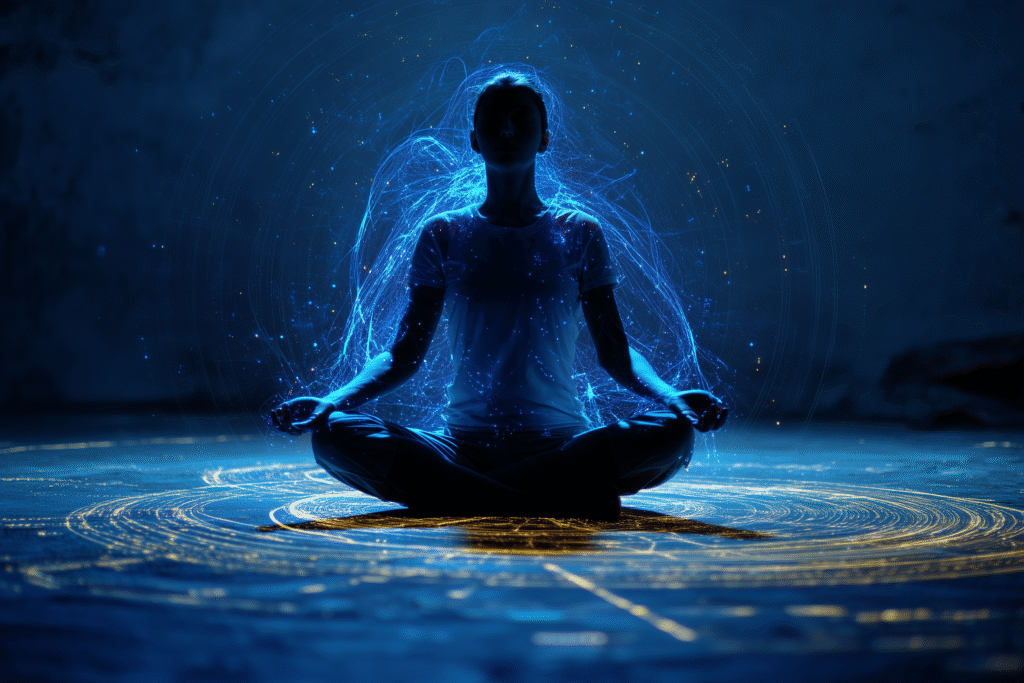
The Systematic Path Forward
Flow is your birthright—a natural capacity of human consciousness that becomes accessible through understanding and practice. Every framework we’ve explored contributes to flow cultivation:
- Quantum presence provides the awareness foundation
- Conscious breathing creates physiological coherence
- Signal detection reveals optimal timing and conditions
- Movement patterns trigger neurophysiological transitions
- Environmental design supports sustained focus
The algorithm isn’t rigid—it’s a framework for experimentation and personalization. Your optimal flow conditions will be unique to you, discovered through practice rather than prescription.
What begins as deliberate practice eventually becomes natural capacity. The environmental awareness becomes automatic. The breathing patterns integrate seamlessly. The movement gateways activate effortlessly. Flow transforms from peak experience to accessible tool.
This is consciousness technology at its finest—using systematic understanding to cultivate states that enhance both performance and life satisfaction. You’re not just learning to flow; you’re learning to direct consciousness itself.
See you in the next insight.
References
- Yaden, D. B., Haidt, J., Hood Jr, R. W., Vago, D. R., & Newberg, A. B. (2017)[1]. The varieties of self-transcendent experience. Review of General Psychology, 21(2), 143-160. https://doi.org/10.1037/gpr0000102
- Dietrich, A. (2004)[2][9]. Neurocognitive mechanisms underlying the experience of flow. Consciousness and Cognition, 13(4), 746-761. https://doi.org/10.1016/j.concog.2004.07.002
- McCraty, R., & Shaffer, F. (2015)[3]. Heart rate variability: New perspectives on physiological mechanisms, assessment of self-regulatory capacity, and health risk. Global Advances in Health and Medicine, 4(1), 46-61. https://doi.org/10.7453/gahmj.2014.073
- Mehta, R., Zhu, R., & Cheema, A. (2012)[4]. Is noise always bad? Exploring the effects of ambient noise on creative cognition. Journal of Consumer Research, 39(4), 784-799. https://doi.org/10.1086/665048
- Oppezzo, M., & Schwartz, D. L. (2014)[5]. Give your ideas some legs: The positive effect of walking on creative thinking. Journal of Experimental Psychology: Learning, Memory, and Cognition, 40(4), 1142-1152. https://doi.org/10.1037/a0036577
Hannaford, C. (2018)[6]. Smart Moves: Why Learning Is Not All in Your Head. Great River Books. https://www.worldcat.org/title/smart-moves-why-learning-is-not-all-in-your-head/oclc/1047924055
- Csikszentmihalyi, M. (1990)[7]. Flow: The Psychology of Optimal Experience. Harper & Row. https://www.worldcat.org/title/flow-the-psychology-of-optimal-experience/oclc/20644043
Jackson, S. A., & Csikszentmihalyi, M. (1999)[8]. Flow in Sports. Human Kinetics. https://www.worldcat.org/title/flow-in-sports/oclc/40952390
Meyers-Levy, J., & Zhu, R. (2007)[10]. The influence of ceiling height: The effect of priming on the type of processing that people use. Journal of Consumer Research, 34(2), 174-186. https://doi.org/10.1086/519146

